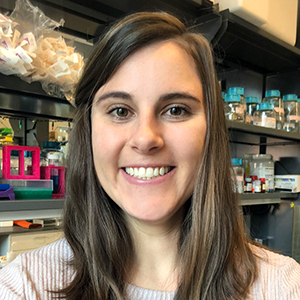JBC: How green tea affects cells
Green tea has been reported to have many effects on the body, from steadying blood sugar levels to preventing cancer. Yet reports delving into the scientific validity of these claims often have been paradoxical, with some proposing pronounced health benefits and others finding no correlation. A recent article in the Journal of Biological Chemistry from the lab of Chungho Kim of Korea University and Mark Ginsberg of the University of California, San Diego, partially explains why results may be inconsistent: The active ingredient of green tea can have multiple effects on transmembrane signaling, resulting in varied outcomes.
 Epigallocatechin gallate, or EGCG, is the bioactive ingredient of green tea. “EGCG has been reported to have complex and sometimes paradoxically opposing effects on many cellular signaling pathways,” Kim said. “However, the mechanisms underlying these effects have remained elusive.” Kim began studying the effects of EGCG during his postdoctoral research in the Ginsberg lab partially out of personal interest. “I grew up in a culture that says green tea can thin the blood,” he said.
Epigallocatechin gallate, or EGCG, is the bioactive ingredient of green tea. “EGCG has been reported to have complex and sometimes paradoxically opposing effects on many cellular signaling pathways,” Kim said. “However, the mechanisms underlying these effects have remained elusive.” Kim began studying the effects of EGCG during his postdoctoral research in the Ginsberg lab partially out of personal interest. “I grew up in a culture that says green tea can thin the blood,” he said.
However, many of his initial experimental results were inconsistent and variable, making it difficult to understand the underlying mechanism through which EGCG acts.
Now an independent investigator, Kim has continued his research in collaboration with Feng Ye, a postdoctoral fellow in Ginsberg’s lab, by studying two representative transmembrane signaling receptors to investigate how EGCG induces cellular effects. The first, an adhesion receptor, is called platelet integrin alpha(IIb)beta(III). The second, the epidermal growth factor receptor, or EGFR, belongs to the tyrosine kinase class of receptors.
The researchers used agonists to analyze the activation of these receptors in the presence of EGCG. They observed different activation effects based on whether the receptor agonist was present or absent. “Our findings with prototypical integral membrane proteins show that EGCG-mediated modulation is unique: it can activate inactive receptors but inhibit activated receptors in a receptor-specific manner. It is working as a toggle switch of transmembrane signaling,” Kim explained.
EGCG has been shown to interact with membrane phospholipids. These interactions can alter characteristics of the lipid bilayer — by decreasing its thickness, for example. To test if EGCG–lipid interactions could explain the receptor activation results, Kim and Ginsberg used transmembrane embedding assays. “We were able to explain the paradoxical effects,” Ginsberg said, “by observing that EGCG induces changes in embedding of transmembrane domains and relating this to effects on cell signaling.
The team used the data from the model receptors to come up with a theory as to why EGCG has different cellular effects. Their embedding assay data show that EGCG can change the topologies of receptor transmembrane domains, meaning that the angle at which the domain is embedded in the lipid bilayer can be increased or decreased. This can activate the receptors. But for receptors with activation that requires a shift in transmembrane domains, EGCG can oppose the shift, which inhibits the receptors. This dual effect would explain why there are so many conflicting reports in the field about the effects of EGCG.
Kim predicts their findings may have an impact on human health. Green tea is consumed as both a beverage and in a medicinal capacity, especially in East Asian countries. Studies have suggested that EGCG or green tea may reduce the risk of developing some cancers and cardiovascular diseases. The research by Kim’s group helps provide better understanding of how green tea may be mediating these healthy effects. “We believe our understanding of the mode of action in EGCG on cellular signaling may enable further development and utilization of EGCG as a pharmaceutical compound,” Kim said.
Enjoy reading ASBMB Today?
Become a member to receive the print edition monthly and the digital edition weekly.
Learn moreGet the latest from ASBMB Today
Enter your email address, and we’ll send you a weekly email with recent articles, interviews and more.
Latest in Science
Science highlights or most popular articles

National Academies propose initiative to sequence all RNA molecules
Unlocking the epitranscriptome could transform health, medicine, agriculture, energy and national security.

From the journals: JLR
What can you do with artificial lipoproteins? A new key to angiogenesis. Flavonoids counteract oxidative stress. Read about recent papers on these topics.

Iron could be key to treating a global parasitic disease
A study has found that leishmaniasis causes body-wide changes in iron balance, leading to red blood cell damage.

Environmental DNA is everywhere
The ability to extract trace bits of DNA from soil, water, and even air is revolutionizing science. Are there pitfalls?

Early COVID-19 research is riddled with poor methods and low-quality results
The pandemic worsened, but didn’t create, this problem for science.

From the journals: MCP
Three views of mass spec: analyzing secreted protein spectra, imaging mass spectrometry for clinical use and spectral libraries for MS data analysis. Read about these recent papers.

